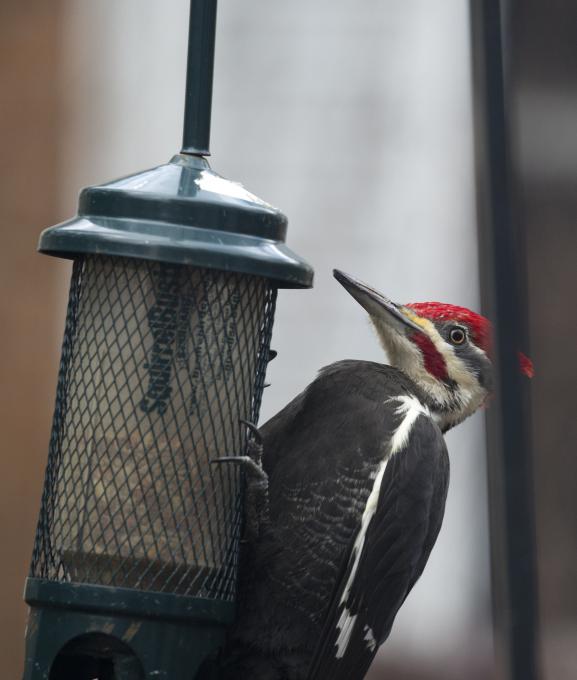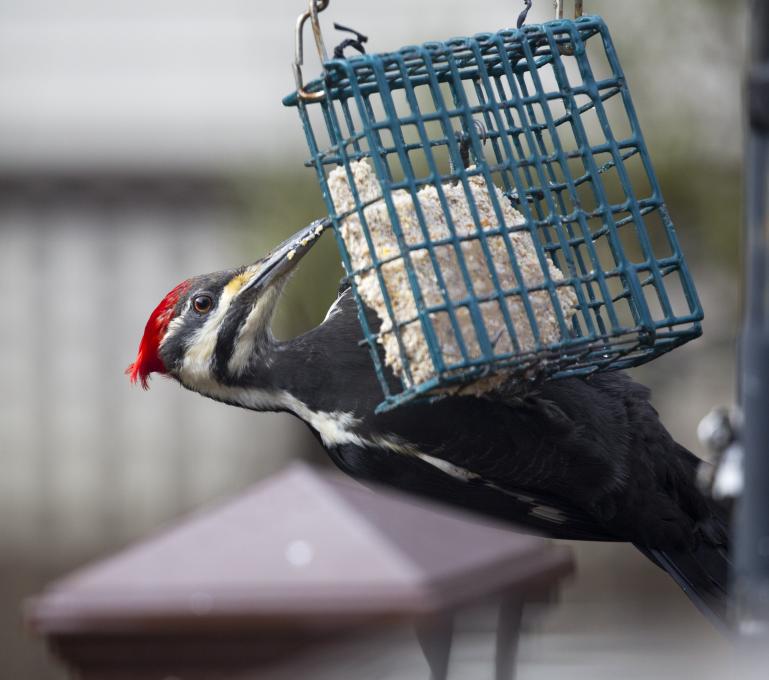The Cornell Lab Bird Academy › Discussion Groups › The Wonderful World of Woodpeckers › What Makes a Woodpecker a Woodpecker
-
I enjoyed learning about the Wrynecks, Flamebacks, and Piculets. I also thought it was neat how the Downy and Hairy Woodpeckers look so much alike yet have different close relatives. I had assumed they were closely related!
-
The acorn woodpecker appears to be extremely social compared to the species I have seen in the Eastern United States. I have only ever seen the local woodpeckers alone. However, I can identify some calls and can tell when they seem to bee responding to one another. At least that what I think they are doing.
-
I was surprised that the pileated woodpecker perhaps mimicked the ivory-billed woodpecker, and I'm also hopeful that Cornell is reluctant to say that the ivory-billed woodpecker is extinct. I love seeing the pileated woodpeckers where I live.
-
There seem to be many pileated woodpeckers in the woods of our property. We have a lot of old growth trees and I have seen many pileated woodpeckers flying low from tree to tree and even across the road. They do not seem to concerned with our presence as we walk through the woods, I have even filmed one working on a tree fairly close and it does not seem to bother them.
-
I was also struck by the hopefulness in regard to the Ivory-Billed Woodpecker. I'm so struck by the size and beauty of the Pileateds near my home here in Vermont - likely going to be one of my next tattoos :)
-
-
I have the same surprise as I did with owls - that they have evolved with obvious “woodpecker” characteristics, yet in so many different sizes and plumages globally. I am also surprised at the number of woodpeckers worldwide that have black and white backs.
-
I was surprised that there was a woodpecker who lived on the ground. (The ground woodpecker)
-
I was suprised and facisnatied about the who concept of mimicry. Where I live there are both Downy and Hairy Woodpeckers, so it makes sense that the downy would mimic the larger bird.
-
I was surprised that although there are no woodpeckers in Australia or most Pacific islands - there ARE a few on a couple of islands. Why only these islands? When did they arrive there? How? Very interesting. Also, the mimicking is very interesting.
-
What surprised me was that woodpeckers do not live in Australia and New Zealand and that so many species look alike but are very different and benefit from each other.
-
I did not realize how many colorful species of woodpeckers there are in Southeast Asia!
-
I am very impressed how colorful they are. Why do so many woodpecker species display red? I didn't know about the mimics. It will change what I think about when observing downy and hairy woodpeckers.
-
That have surprised me the most was that the woodpecker species that looked alike are not closely related to each other. What a beautiful birds !
-
Didn’t realize this variety of color shape and siz And their world wide range. I also thought their absent in Australia and other islands was intriguing
-
The Piculets and Wrynecks that are so different from the woodpeckers in the US. They all have the long tongue!
-
I enjoyed the pictures and clarification on the extended tongue. I see a male and female Gila Woodpecker at my hummingbird feeders more often than the hummingbirds. I have been confused how they get any nectar.
-
What surprised me was their diet. How do Acorn woodpeckers eat the acorn? Swallow it whole?
-
I was wondering the same thing! Living in the Northeast U.S. I've never witnessed an Acorn Woodpecker but have been fascinated by their obsessive behavior. I loved learning that it is both practical and social to co-create the granaries.
-
-
What surprised me most is the absence of woodpeckers in Australia and New Zealand!
-
I was struck by the breeding dynamics within the acorn woodpecker social groups. I also found it interesting to learn that as the acorns shrink, the birds move them to a hole that better fits them.
-
The range of colors and patterns is amazing. They must be one of the more striking groups of birds. I hope you will be talking about how/why this coloration developed. Does it have to do with forest dwelling birds needing to be brighter due to lower light availability? On the other hand, Acorn Woodpeckers aren’t really forest dwellers and they’re quite bright.
-
I love the acorn woodpeckers! Their so smart! It surprised me about the woodpecker diversity and how many species there are!
-
When we went to Arizona, one of the woodpeckers I really wanted to see was the acorn. In Coconino National Forest I got my wish. Beautiful and cute. Since I come from Southern Ontario, I was so happy about seeing this beautiful little guy.
-
-
There is much about this species that surprises me! I was very surprised to learn how far the Yellow-bellied Sapsuckers migrate. The Acorn Woodpeckers surprise me the most. Their social groups, the presence of breeding helpers as well as stashing helpers, and generally the communal nature of their groups all surprise me greatly. I have seen the granaries, but had no idea how obsessive compulsive these beauties are!! What an amazing lesson. Thank you.
-
While the female Pileated Woodpecker is busy eating on the suet, the male is investigating the nut feeder.


-
Chris, The toe placement on the Pale-billed Woodpecker is interesting. Was the bird stationary when you captured that image or was it working its way up the tree trunk?
-
The bird was kind of hopping up the tree trunk. He didn’t seem to be using his tail like other woodpeckers do.
-
-
It is amazing how similar species look. The second pic is a pale-billed woodpecker I photographed in Costa Rica. The first pic is the pileated I see in my yard.


-
These are really nice quality pictures.
-
@Richard Thank you Richard. Bird photography is part of my job at a land conservancy.
-
Those are some awesome pictures!
-
-
When traveling in the southwest the Acorn Woodpecker is one of my favorite subjects for photography. I caught this one in the blink of an eye. (Boulevard, Calif.)

-
Amazing and beautiful! Thank you Kevin!
Read More:




